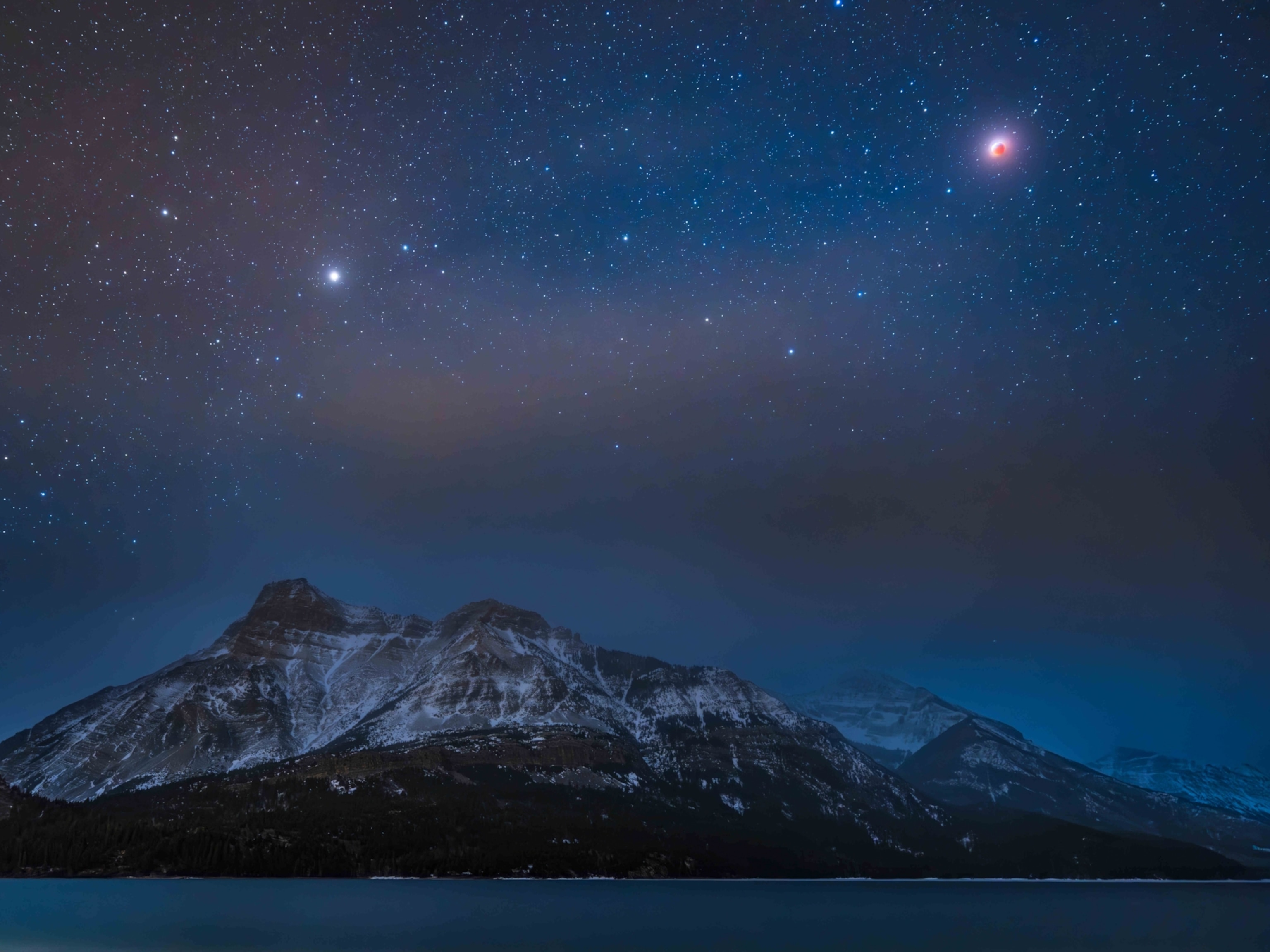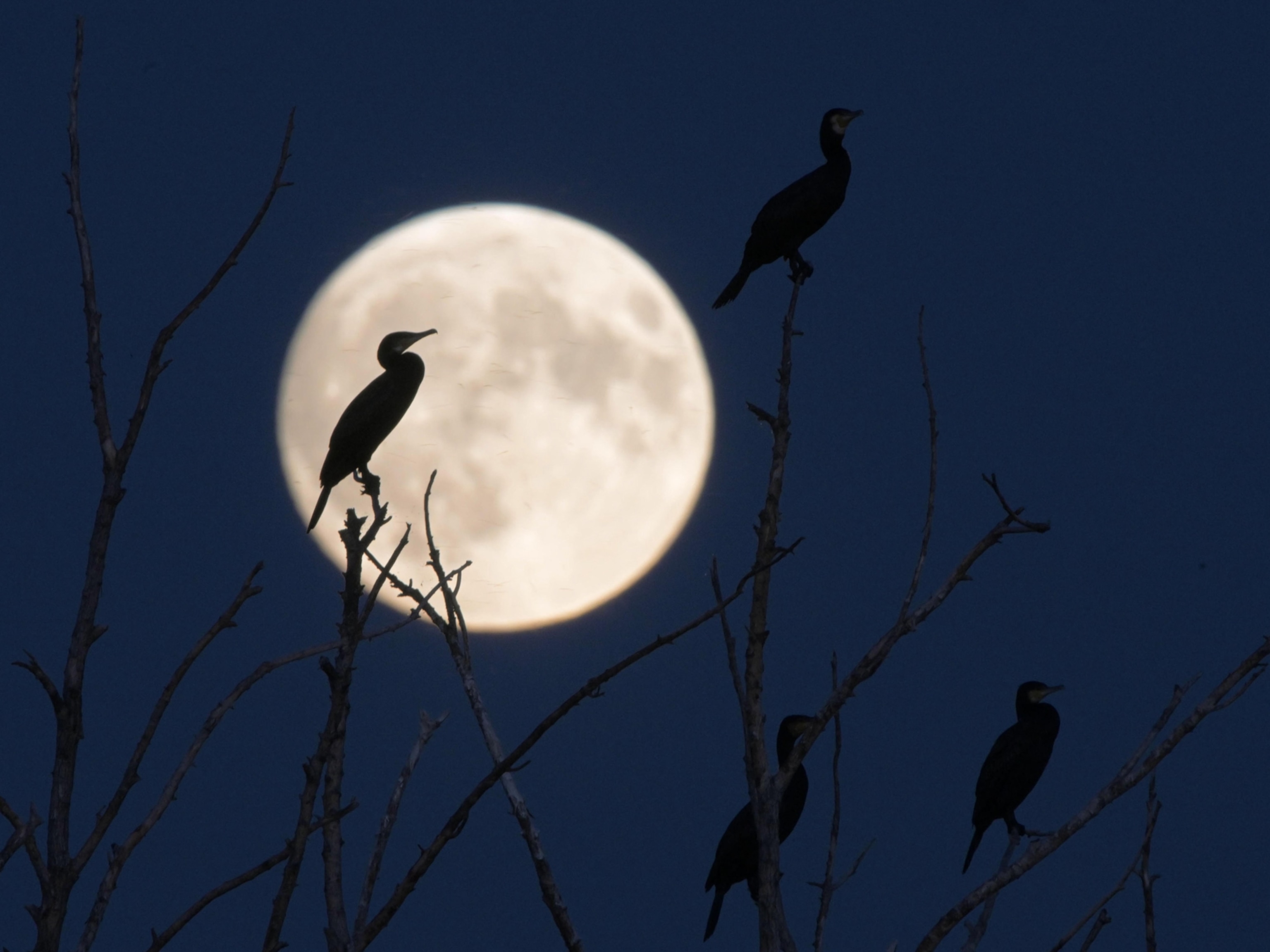
Mars Meets Lunar Eclipse, and More Can't-Miss Sky Events in July
The red planet at its best, a long-lasting "blood moon," and a rare chance to glimpse Pluto will excite sky-watchers this month.
With Mars at its closest to Earth in 15 years, an extra-long lunar eclipse, and a dazzling meteor shower, July is shaping up to be a busy time for sky-watchers.
So, dust off those binoculars, and get set to explore the night sky this month.
Venus and Regulus—July 9
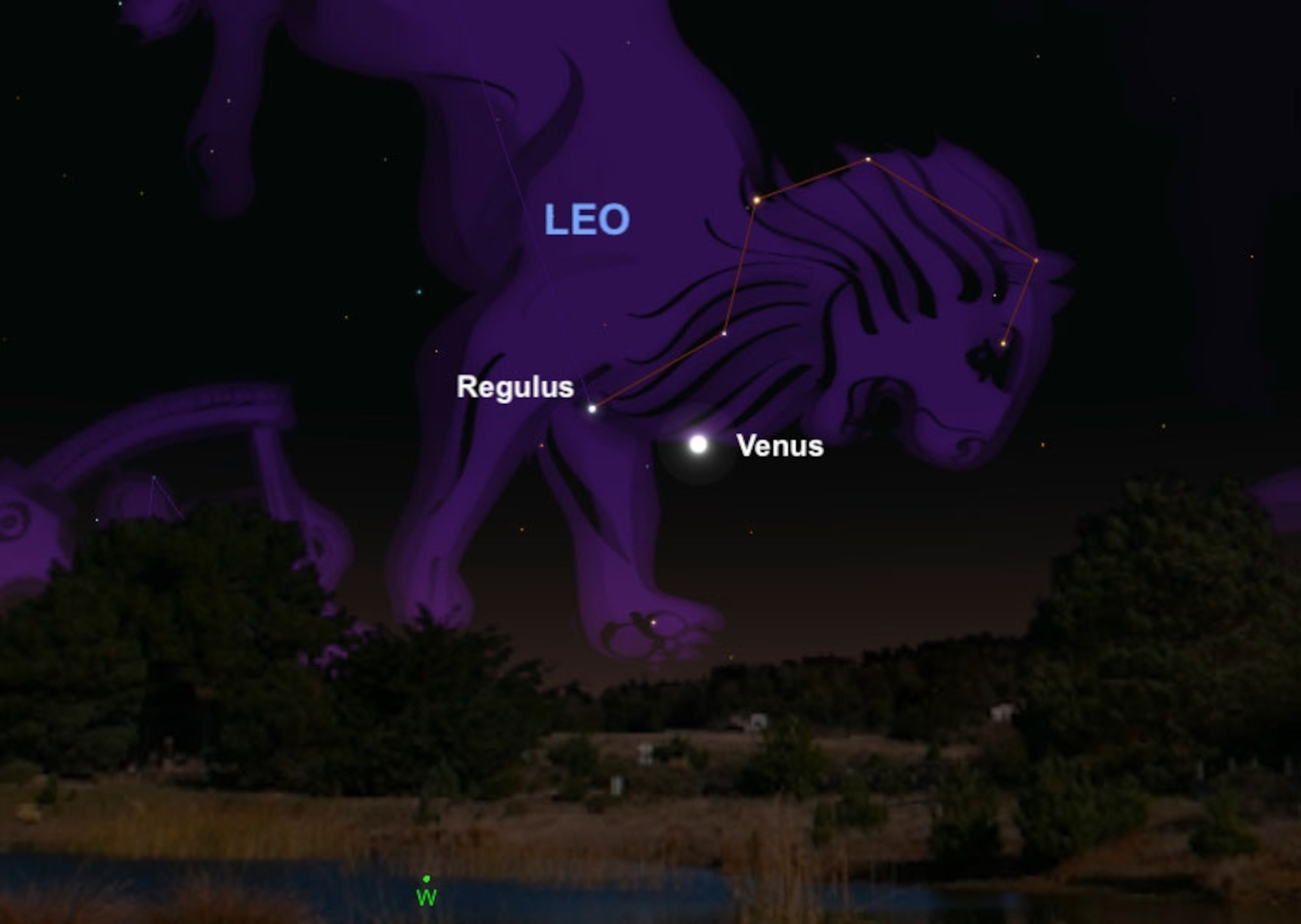
About a half hour after local sunset, look very low in the southwest sky for brilliant Venus. On this night, the bright star Regulus, in the constellation Leo, should be perched right next to the planet, creating a stunning conjunction. The cosmic pair will be only one degree apart, or separated by about the width of two full moons.
Pluto at Opposition—July 12

Pluto will put on its best show in Earth’s skies for 2018 on this night. This is when the super-faint world reaches opposition, meaning it will lie opposite to the sun in our sky. It will rise in the east at sunset and set in the west at sunrise, allowing Pluto to be visible all night long. The small world is currently nestled within the southern constellation Sagittarius, which will appear late at night along the southern horizon for those in mid-northern latitudes.
Glimpsing Pluto is among the toughest observing challenges: It sits more than 4.6 billion miles away, and even at opposition it shines at a meager 14.1 magnitude—far fainter than what humans can see with the naked eye. Backyard sky-watchers will need a telescope with at least an eight-inch diameter mirror to glimpse this tiny world at the fringes of the solar system.
Moon Joins Jupiter—July 20
In a fitting tribute to the Apollo 11 moon landing, which happened 49 years ago on this day, look halfway up the southwestern sky about an hour after local sunset to watch the moon glide past Jupiter in the constellation Libra, the balance.
Moon Meets Saturn—July 24
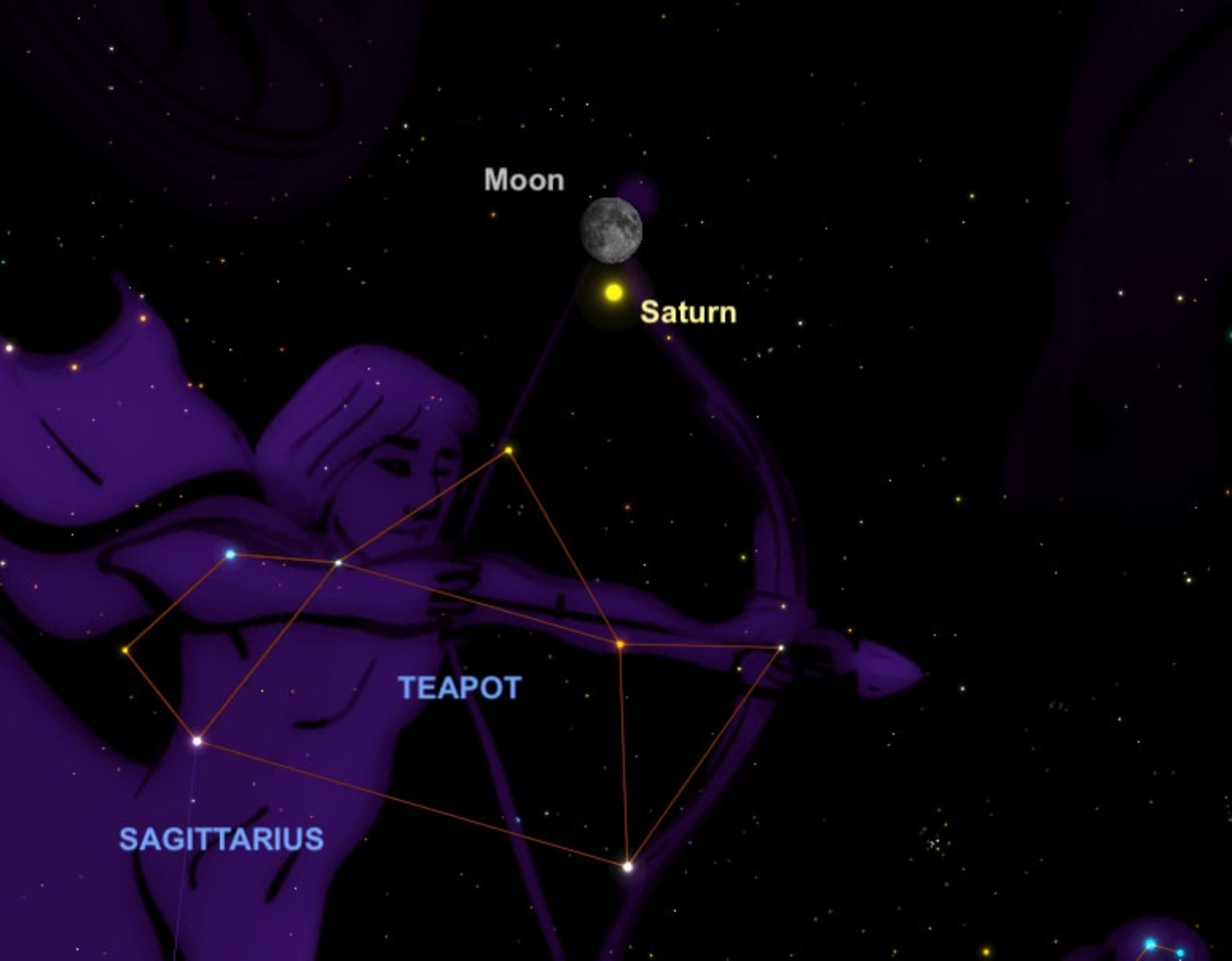
A few nights later, Saturn will get its turn for a close encounter with the moon. The pairing will make a great photo opportunity as the two worlds hang together low in the southeast within Sagittarius, right above the "teapot" pattern of stars that's part of the constellation. Saturn was at opposition only a few weeks ago, so the ringed planet and its larger moons will still make great targets for sky-watchers with backyard telescopes.
Mars at Its Best—July 27
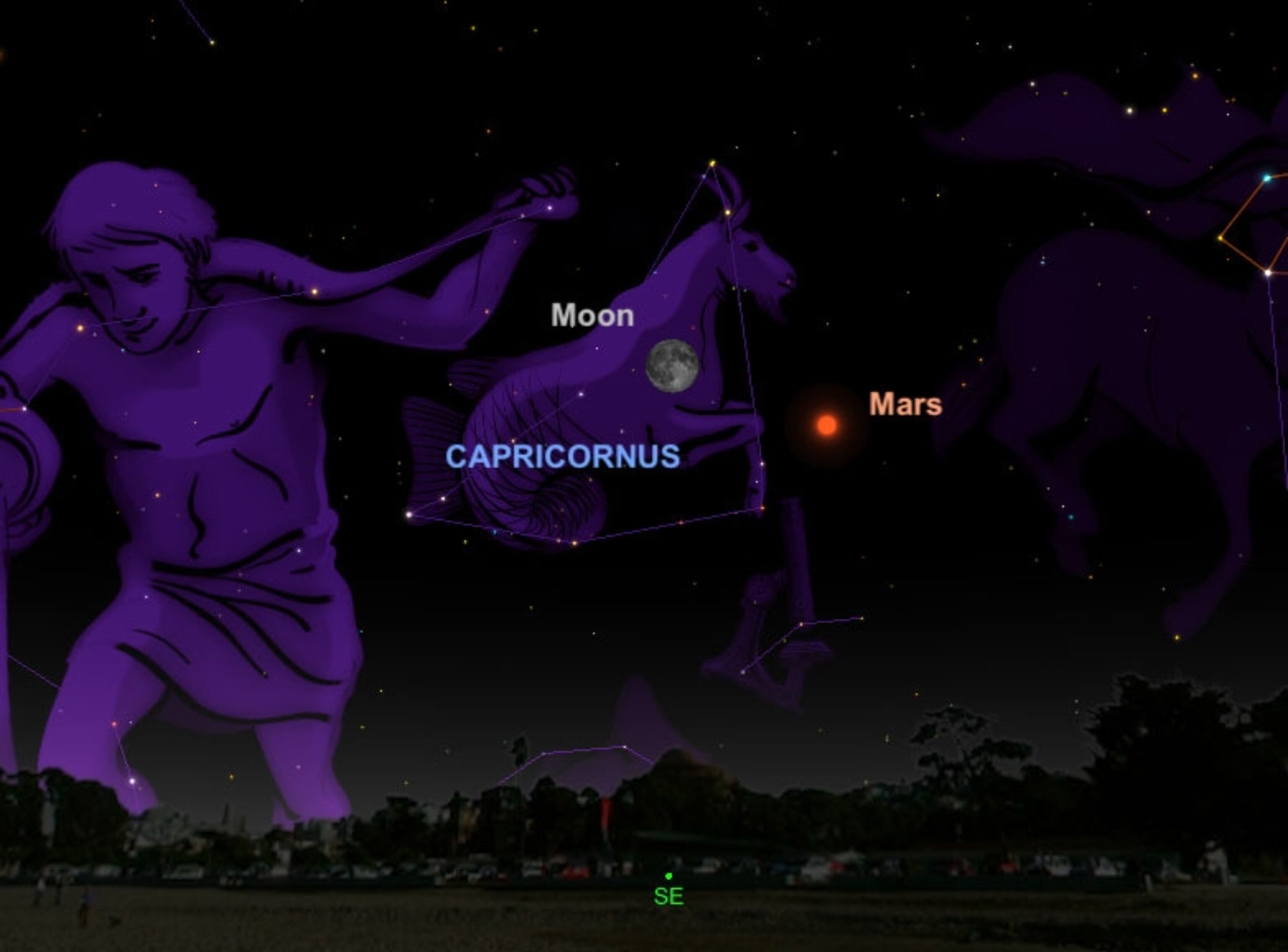
The red planet will be at opposition and will make an exceptionally close pass by Earth on this night, coming within 35.8 million miles of our planet. That means Mars will appear at its biggest and brightest since 2003—even outshining Jupiter in the night sky for a few weeks.
The distinctly orange-hued object will rise in the east as night falls and will be visible in the southeast sky within the constellation Capricornus, the sea goat. High-magnification views of Mars through backyard telescopes will show off its distinct surface features, such as the ice-covered northern polar cap.
Total Lunar Eclipse—July 27
Also on this night, lucky sky-watchers across Europe, Africa, Asia, and Australia will get a front-row seat for the longest “blood moon” eclipse of the century. This total lunar eclipse—when the full moon glides into Earth’s deep umbral shadow—will last a whopping 1 hour and 43 minutes.
Observers in Africa and western Asia will get to see the full show, while Europeans will see the partially eclipsed moon rise and then witness totality. Meanwhile, East Asia and Australia will see part of the lunar eclipse on the morning of the 28th as the moon sets in the west.
Southern Delta Aquarids Peak—July 30
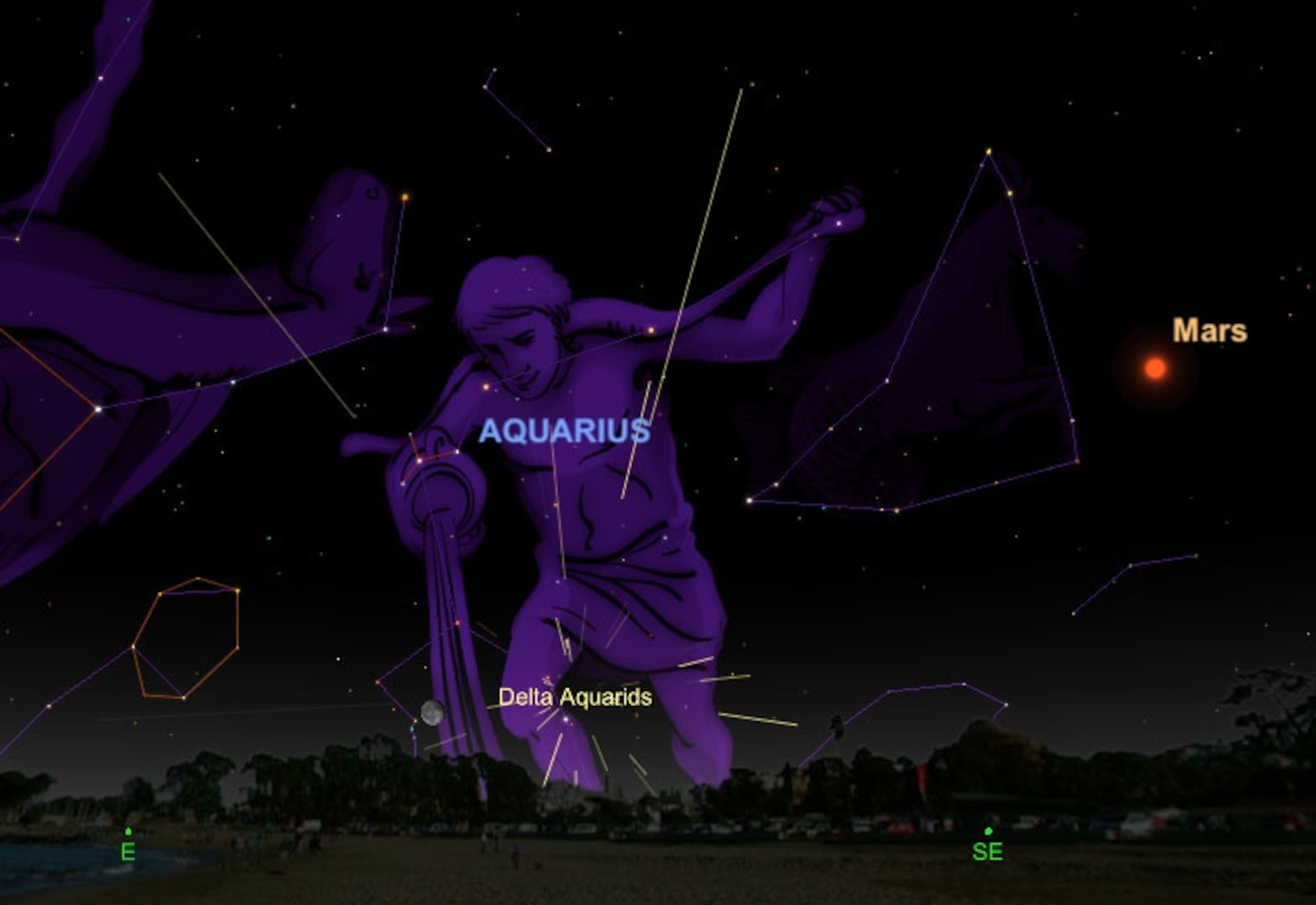
The Southern Delta Aquarid meteor shower is visible from July 12 to August 23. But you should watch for this annual sky show to really ramp up starting late on July 28 and lasting through July 30. On peak nights, you should be able to see more than a dozen shooting stars an hour if you’re away from city lights. Meteors will radiate from their namesake constellation Aquarius, the water bearer, along the low southern horizon.
Clear skies!
Andrew Fazekas, the Night Sky Guy, is the author of Star Trek: The Official Guide to Our Universe. Follow him on Twitter and Facebook.



